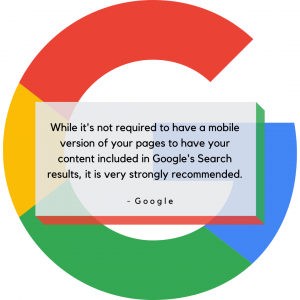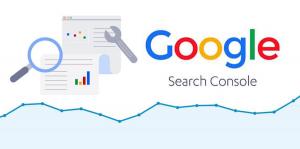
In today’s ‘optimized’ world of the internet, you don’t have the liberty to ignore even a single edge or corner of your website. You never know what tanks your search rankings, and before you identify to fix the issue, you have lost everything. Be it improving the SEO web design or enhancing the website’s authority through backlinking, a good SEO strategy is like a giant umbrella that covers everything from the backend code to the UI to internal linking and social media shares. Basically, whatever can be optimized should be optimized for better performance on the search engine ranking page.
Tips for best SEO web designs
Optimizing websites to rank higher in search engines means improving designs, enhancing speed, fixing coding errors, and doing value additions like schema markups. This blog covers all the fixes you need to implement to have a fully optimized web design.
Responsive web design and mobile optimization
Today, we have our desktops, our laptops, our tablets, our mobile phones, and smartwatches. Only God knows at what screen size will this stop. But they are here, and we use them all. We also want a seamless transition from the largest screen to the tiniest one, without any lag or pixel loss. What makes that possible: behold and thank responsive web design. The Holy Grail of today’s web designing and a darling of search engines.
Websites with a responsive design manage to hold viewers for longer durations. Can we blame them? Who wouldn’t stay on a website that doesn’t require dimension fixing or zooming in and out just to view an image? A responsive design improves experience signals, such as bounce rate and time on site – vital search factors.
A responsive web design also solves another problem: duplicate content. Without a responsive design that opens as well on a smartphone screen as on a desktop, websites create separate mobile versions. Their URLs start with m, like m.example.com. This leads to content duplication, where similar things are posted on two different websites. This throws your SEO efforts into the garbage as two of your web pages are competing for a higher spot on the SERP.
Now when I said search engines love a website optimized for mobile phones, I was kind of underselling it. The truth is they not only love them, but they are also biased towards them. Here’s what Google said about mobile versions of websites.

Google has mobile-first indexing, which means it primarily uses the mobile version of a website for indexing and ranking. Having a responsive SEO web design ensures that your website is mobile-friendly and can be properly crawled and indexed by search engines.
Google also asks developers to post the same content on mobile sites as on desktop sites. The UI might differ due to the realignment of tabs and buttons, but the content should be the same with clear headings.
If you want to have less content on mobile pages than desktop ones, you should move data content into accordions or tabs instead of deleting it. While you do that, make sure you are using the same headings on the mobile site as you do on the desktop site.
Website speed and performance
If the internet existed when the rabbit and turtle had ‘that’ race, ‘slow and steady wins the race’ would never have become an aphorism. In the post-internet world, no one wins anything being slow, especially not a website. People want them fast, like very fast. They want them to open in 1 second, anything slower, the bounce rate rises faster than today’s inflation.
Site speed is integral to SEO website design because how well your website is indexed depends on the site speed. Enter crawl budget. Search engines allocate a specific crawl budget to each website, which determines how frequently and deeply they crawl its pages. With a slow website loading speed, search engine bots or crawlers have to spend more time waiting for the pages to load, thus, vital crawl budget is lost while doing nothing, and fewer pages appear in the SERP. Websites with speed optimization are crawled fasted and indexed better.
There are also TBFT and TTI that are vital for search engine rankings. TBFT, or Time to First Byte, is the time it takes for a user’s browser to get the first byte of data from the web server after making a request. TTI, or Time to Interactive is the duration a webpage takes to become fully interactive. Websites with faster TTI and TBFT provide a smoother and more engaging user experience, resulting in improved SEO metrics and rankings.
URL structure and navigation
In today’s world, with billions of websites, everything from the logo at the top left corner of your website to the last line of your Java script impacts the SEO. Take URLs, for example; how short they are, how uniform they are, or how optimized they are can boost or tank SEO efforts. A URL structure optimized for SEO should be short, with keywords, and separated by hyphens.
Keywords and SEO success go hand in hand. Having keyword-rich URLs improves the readability and usability of a website. A descriptive URL tells users what kind of content is available on the webpage before even clicking it. If you play your cards right and rank for the right keywords, the viewers are definitely going to click on the link. This increases your organic click-through rates (CTR), and your website’s ranking will improve.
Any website design with SEO in mind must have short URLs and a simple navigation structure. Shorter URLs are easier to remember for users and generally easier to share, thus more backlinks which boost your site’s credibility.
When we talk about linking, we tend to focus a lot on external linking and not much on the internal ones. A simplified and well-structured internal linking system is a must for SEO because it makes it easier for crawlers to discover and index pages more effectively.
Crawlers use internal links to jump from webpage to webpage, and these links also distribute authority across the site. A simplified site structure helps the search engine understand the hierarchy and importance of pages and improves overall user experience as well.
Another important problem to troubleshoot while optimizing URLs is duplicate content. This is done by canonical URLs. When multiple web pages host similar content, a common problem with e-commerce companies, canonical tags tell search engines which is the “master page” or the page they should index.
On-page optimization
The foremost step in on-page optimization is getting your keywords and headings right and fixing design elements for better and improved user experience. The first thing to get spot on is your keyword strategy. High volume and money-making keywords strategically go into core spaces like the title tag, meta description, headings (H1, H2, etc.), URL structure, and throughout the content itself. Beyond specific keywords, they also include semantic variations and related terms. Search engines now recognize the context and meaning behind words, so incorporating semantically related keywords and phrases in your content helps search engines better comprehend the topic and relevance of your page.
Well, a lot of on-page optimization is actually optimizing the web page – meaning working with your SEO web designer to fix the UX elements. This also includes page speed optimization. For high-speed page loading, the code and script sizes should be minimized, with compressed images, enabling gzip compression, and employing techniques like lazy loading. This helps reduce page load times and provides a better user experience valued by search engines.
Structured data markup
Structured data markup is my favorite part of SEO and website design. I love it just because of its sheer utility. I mean, I can search for a term, and Google will give me all the basic information about it without me having to even click a link. Here’s how Google explains it:
“Structured data is a standardized format for providing information about a page and classifying the page content; for example, on a recipe page, what are the ingredients, the cooking time and temperature, the calories, and so on.”

Structured data are a hit among users and a jackpot for websites because:
- they appear on top of a SERP
- they give information about a topic without even clicking
- they stamp on the website’s authority leading to higher CTR
Structured data have leveled the playing field for every website to have a shot at the top of rankings. Google supports several structured data, including recipes, books, movies, carousels, articles, courses, datasets, Q&A, images, events, facts, How-to, and whatnot.
Google supports structured data in JSON-LD, which it also recommends for the purpose, microdata, and RDFa. Once you have located the relevant part on your web pages that you want to feature as structured data, add structured data markup into the HTML code of web pages. Also, ensure that the markup is placed in the appropriate locations and follows the syntax guidelines.
Technical SEO
While on-page SEO takes care of the front end, technical SEO is all about improving your backends. Some parts of technical SEO involve fixings codes and site structure, while a lot has to do with making it easier for search engines to crawl your website. Take the example, robots.txt file. It controls how crawlers access and index your website. Configure a robots.txt file to allow the crawling of important pages while blocking irrelevant or sensitive sections. This saves your limited crawling budget from being wasted on the least important pages.

If technical SEO gives you a headache, your painkiller is Google Search Console. It is the smartest tool to identify and fix technical errors on websites. It identifies:
Crawl Errors: It is a report identifying pages on your website that Googlebot couldn’t crawl successfully due to “site errors” or “URL errors”. Site Errors indicate problems that affect the entire site, such as server errors, DNS resolution failures, or robots.txt blocking. URL Errors highlight issues with specific URLs, such as 404 errors or redirect errors.
Mobile Usability: Google Search Console also tells you how well your website is optimized for mobile usage and points out issues that may affect the mobile user experience on your website.
Index Coverage: The Index Coverage report highlights indexing issues, such as pages that are blocked by robots.txt, pages with “noindex” directives, or pages that couldn’t be indexed due to errors.
Structured Data: Google Search Console also gives a report on errors relating to structured data markup, incorrect markup types, or invalid markup syntax.
Security Issues: Google Search Console notifies website owners if their site has security issues, such as malware infections or hacked content. Resolving these issues improves website security and enhances search rankings.
Monitoring and improvements
Once you have implemented all the changes to optimize, there is nothing more you can do but monitor what’s working and change what’s not working. For example, if your structured data is not leading to higher CTR, try changing the structured data layout, or if your website is responding slowly on a specific device, alter its code to fix the issue.
If your keyword strategy is not taking you to a higher ranking position for that keyword, try modifying it or ranking for a different keyword. SEO web design involves constant work, and by tracking key performance indicators, you can make informed decisions and support SEO efforts.